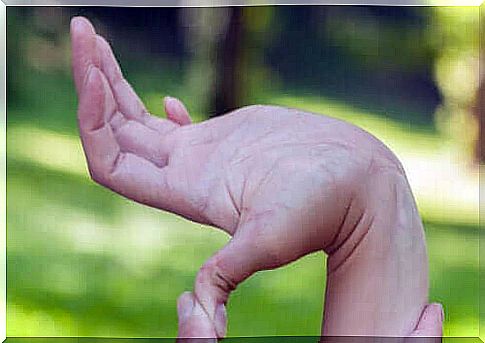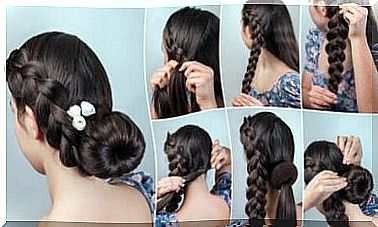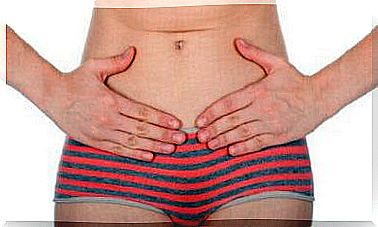Joint Mobility In Children: Pros And Cons

Joint mobility in children under 5 years of age is a common asymptomatic disorder in which the joints move beyond their normal range of mobility. The discomfort occurs when the collagen levels in the tendons and ligaments change so that the collagen fibers become thinner and more flexible.
Joint motility occurs in an average of 30% of children and is more common in girls than boys (3: 1 ratio). Although it usually decreases with age, 2 percent prolongs the ailment.
In this article, we will look at some of the features that are required to diagnose overactive joints. At the same time, we also look at some of the pros and cons of the effort, and most importantly, tell you when to worry.
What causes joint mobility?
Joint motility in children is genetic. Studies show that it is due to a mutation in the tendons that make up the tendons, muscles and skin.
These are characterized by the ability to stretch and return to their original shape, or to shape and adopt a new shape known as plasticity.
Tissue proteins, collagen and elastin work here. When there is more elastin than collagen, the muscles become more flexible and the ligaments thus more brittle. Thus, musculoskeletal injuries occur very easily.
What are the benefits of over-moving joints?
In sports such as gymnastics, ballet, dance, and acrobatics, joint mobility can be a positive thing because it provides amazing flexibility. It is also useful when playing an instrument, such as a flute, violin or piano, which requires a kind of finger dexterity.
In this particular case, the tension and stretching caused by repetitive movements does not cause pain in the same way as those performers who are less flexible.

Disadvantages of joint mobility
Joint mobility can be interpreted as an advantage in the aforementioned sports, although experts urge caution. Muscle weakness and motor clumsiness can be a problem, and even delayed psychomotor development can occur.
Joint dislocation, tendonitis, back pain, scoliosis, knee osteoarthritis, and studies show that anxiety and depression are also common. These problems are not usually related to joint mobility. Some symptoms require special attention.
Joint mobility and muscle hypotension
Muscle weakness causes a delay in psychomotor development, baby turning, sitting, crawling, and walking. Such children have very flexible joints, they bend easily, and their muscularity does not restrict movement.
Such babies do not kick, and their limbs are more outstretched than normal. While on their stomachs, they are overwhelmed with despair because they are unable to support themselves with their arms or hold their heads upright. When they finally learn to stand, they tend to keep their feet on their feet, their feet turned outward, and their knees bent backwards.
Inhibition of muscle function
As a result of the pain, restraint occurs, leading to muscle hypotrophy. This in turn weakens exercise tolerance and thus reduces a child’s participation in sports and games. Delays in psychomotor development and learning to walk are also possible.
Scoliosis and other postural problems
Studies show that there is a statistical relationship between over-mobility and scoliosis due to postural changes. This causes poverty in the back of the spine, known as kyphosis, and increased lumbar curvature.
Many have flat feet and close knees that bend backwards.
Advice and recommendations for parents
A child with overactive joints should be informed of their ailments to prevent the joints from moving repeatedly outside their normal range of motion. This inherent over-mobility is difficult to manage, and the child is likely to want to show the public their “snake-man skills”.
Since abnormal flexion of the joints is not so good, as the doctors say, here are some helpful recommendations:
- Since there is no specific treatment for the ailment, parents should teach the child to protect their joints from prolonged overstretching.
- Try to guide the child to exercise that exercises muscles and improves balance, stability and motor skills.
- If joint hypertrophy has been diagnosed in a baby, parents should seek to strengthen the child’s muscle tone. Here you should consult a physiotherapist for individual advice.
- At home, it is worth doing exercises in which the child has to be face to face on the floor – a position that the child does not like at all due to his effort. This will help the child strengthen their back, neck and hips. Because the posture is uncomfortable for the child, he or she needs to be stimulated with toys or sounds that make him or her raise his or her head.
When to see a doctor because of a child’s joint mobility?
Over-joint mobility can be fun for a child until pain occurs. It is not common, as only 5-10% of people who are overworked or very flexible suffer from discomfort. And if it does occur, the child needs to be taken to a doctor because it may be a joint syndrome.
The Beighton scale is most commonly used to determine over-mobility. The maneuvers it contains include, for example, touching the forearm with the thumb, bending the fingers to an angle of more than 90 degrees, and touching the floor with the palms without bending the knees. If a child scores six out of nine on a scale, it is joint mobility.
This worsening disorder causes pain in the joints and bones, simply by holding the pen for a while. It is also associated with pelvic and knee ailments, flat feet, bruxism, or gnashing of teeth, fatigue and weakness.
Benign joint hyperresponsiveness syndrome is a different matter from Ehlers-Danlos syndrome, which is also an inherited connective tissue disease. EDS causes vascular and eye problems and skin hypersensitivity. It also includes recurrent dislocations, spinal deformities, muscle hypotension, and joint effusion.

Joint mobility in children requires continuous exercise
Parents are encouraged to pay attention to symptoms that may be a sign of greater problems. Joint motility is not easy to diagnose because the symptoms are vague. However, pain is an alarm sign.
Once a child has been diagnosed with benign joint hypertrophy, he or she should follow treatment guidelines. These include a balanced diet, exercise, participation in school activities and quality sleep. Joint overload (e.g. heavy school backpack), extreme sports and contact sports should be avoided.
It is also important to stress that immobility increases the symptoms of over-mobility. In this sense, a progressive resistance training program focusing on specific muscles is recommended. Finally, cycling and swimming are the primary choices.









